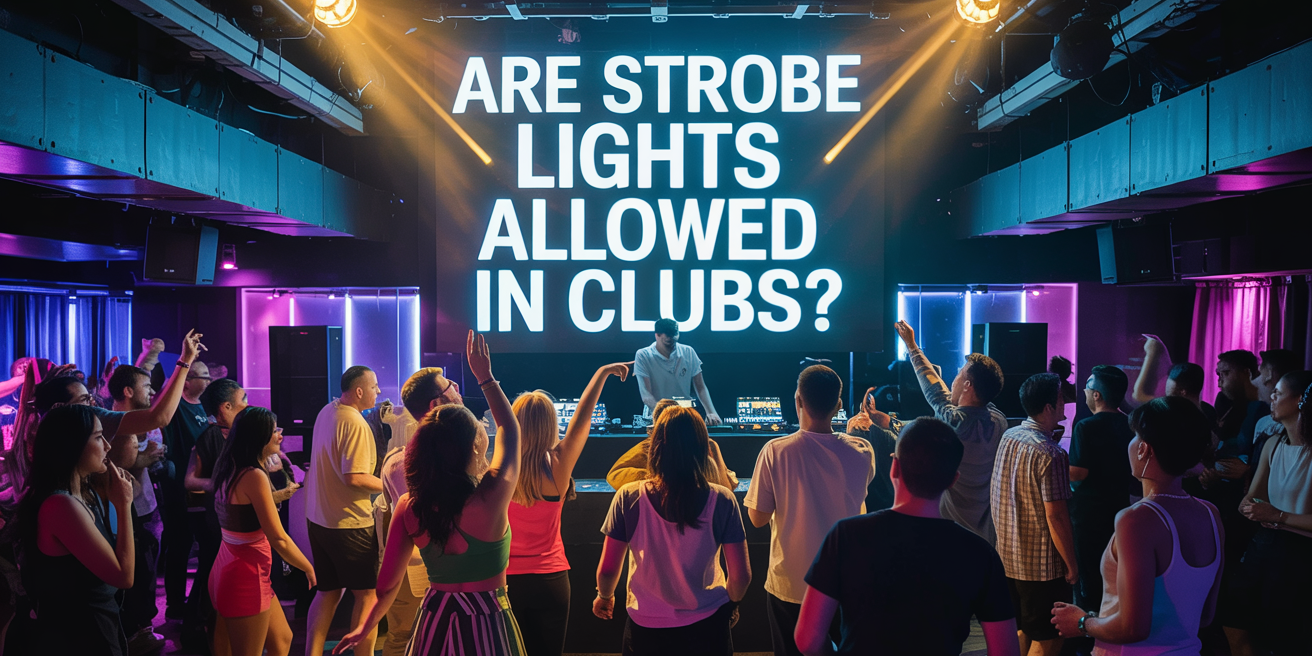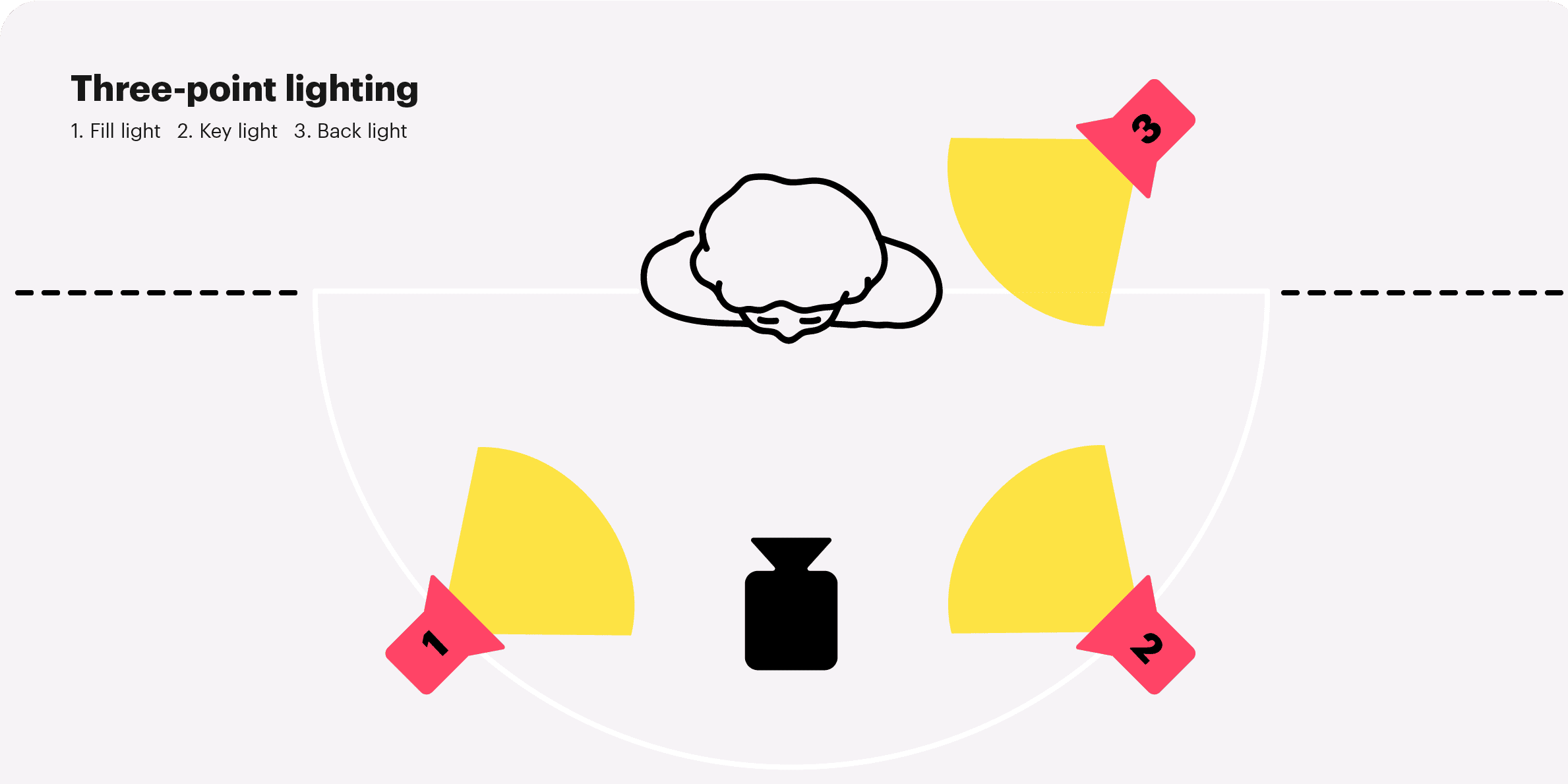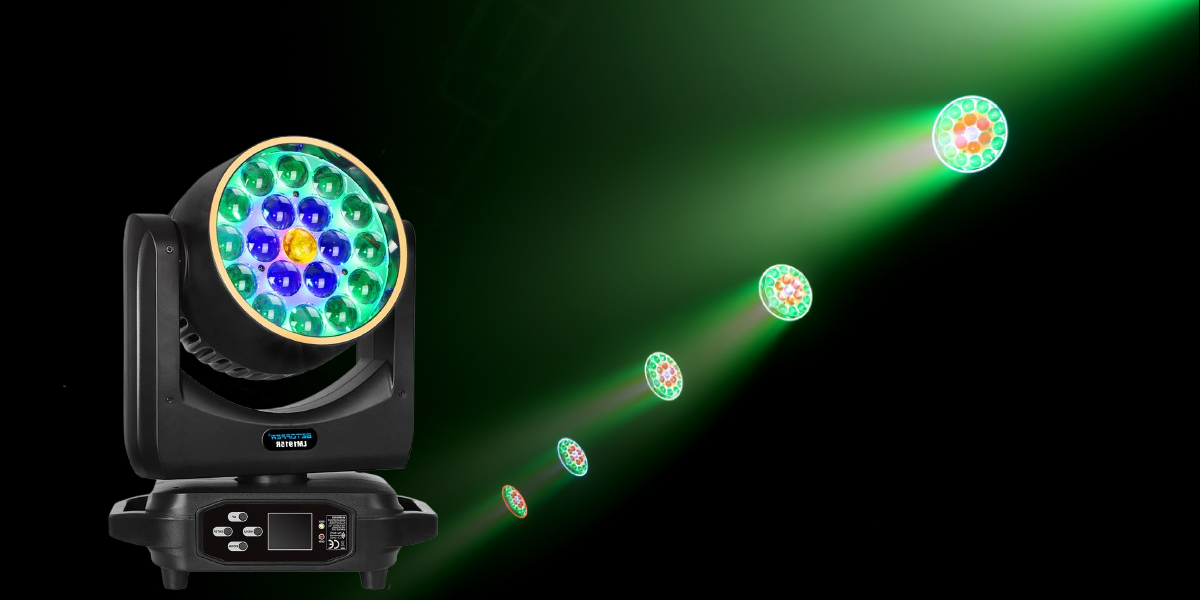Las luces estroboscópicas son la forma más popular de animar las discotecas. Se encienden muy rápido, creando la sensación de que toda la pista del concierto está llena de música y colorido. Sin embargo, estas luces pueden ser peligrosas para las personas con epilepsia. Los destellos brillantes y rápidos provocan convulsiones.
Entonces, ¿Están permitidas las luces estroboscópicas? La respuesta depende de las leyes locales y de la importancia que le dé el club a la seguridad. Analicémoslo.
¿Qué son las luces estroboscópicas?
Las luces estroboscópicas son luces intermitentes de alta intensidad que emiten destellos breves y rápidos a intervalos controlados. Se utilizan comúnmente en entretenimiento, fotografía y señalización de emergencias debido a su capacidad para crear efectos visuales impactantes. En clubes nocturnos y producciones teatrales, las luces estroboscópicas realzan la atmósfera al producir un efecto de cámara lenta o de imagen congelada al sincronizarse con la música.
La tecnología detrás de las luces estroboscópicas
Las luces estroboscópicas funcionan emitiendo destellos de luz de alta intensidad a intervalos rápidos, creando un efecto de parpadeo o de imagen congelada. Esto se logra utilizando tubos de destello de xenón o Matrices de LED, ambos pueden producir potentes ráfagas de luz de corta duración. La frecuencia de destello, medida en hercios (Hz), se controla electrónicamente, lo que permite a los usuarios ajustar la velocidad y la intensidad del efecto.
Las luces estroboscópicas basadas en xenón funcionan descargando energía eléctrica almacenada a través de un tubo lleno de gas, lo que produce un destello intenso, mientras que las luces estroboscópicas LED modernas utilizan tecnología de semiconductores para una mayor eficiencia energética y una vida útil más larga.
Muchos sistemas estroboscópicos de calidad profesional también cuentan con Control DMX, lo que permite una sincronización precisa con música, efectos de escenario o secuencias de iluminación automatizadas para exhibiciones visuales dinámicas.
Tipos de luces estroboscópicas
- Luces estroboscópicas estilo balizaComúnmente utilizados en vehículos de emergencia, entornos industriales y señales de advertencia, estos estroboscopios emiten luces brillantes, giratorias o intermitentes para atraer la atención.
- Luces estroboscópicas de clubDiseñados para lugares de entretenimiento, estos estroboscopios producen destellos de alta intensidad sincronizados con la música para mejorar la atmósfera y crear efectos visuales dinámicos.
- Luces estroboscópicas LEDEstrobos modernos y de bajo consumo que utilizan tecnología LED para una mayor vida útil, menor consumo de energía y frecuencias de destello ajustables. Se utilizan ampliamente en producciones teatrales, fotografía y sistemas de seguridad.
- luces estroboscópicas de xenónLuces estroboscópicas tradicionales que utilizan tubos de destello de gas xenón para generar destellos de luz intensos y cortos. Son ideales en aplicaciones de alta potencia, como la señalización aeronáutica y las advertencias industriales.
- Estrobos de mano:Estrobos portátiles que funcionan con batería y se utilizan en estudios científicos, análisis de movimiento y efectos especiales, lo que permite un destello controlado y preciso.
- Estrobos controlados por DMX: Iluminación profesional Unidades que se integran con DMX (Multiplexor digital) sistemas que permiten una sincronización precisa con otros efectos de iluminación de escenario en conciertos, teatros y eventos a gran escala.
Efectos visuales y percepción humana
Las luces estroboscópicas crean una experiencia visual única al producir ráfagas rápidas de luz brillante, que pueden hacer que los objetos que se mueven rápidamente parezcan como si se estuvieran moviendo en cámara lenta o incluso congelados en el lugar.
Este efecto estroboscópico ocurre porque el cerebro humano procesa cada destello como una imagen separada, en lugar de un movimiento continuo, lo que da como resultado una apariencia casi surrealista, de stop-motion.
¿Están permitidas las luces estroboscópicas en los clubes?
Ahora que sabemos qué son las luces estroboscópicas, respondamos la gran pregunta: ¿Están permitidas en los clubes? Las normas varían, y los dueños de los clubes deben encontrar un equilibrio entre la diversión y la seguridad para evitar problemas legales.
Regulaciones de luz estroboscópica
El U.SNo existe una prohibición nacional de luces estroboscópicas en clubes, pero existen directrices. Por ejemplo, la OSHA sugiere mantener la frecuencia de destellos por debajo de 4 destellos por segundo para reducir el riesgo de convulsiones, como se menciona en los consejos de seguridad de RMS Insurance. Algunos estados van más allá. Ohio... Change.org La petición muestra un creciente apoyo a las prohibiciones en espacios públicos como clubes.
Los códigos locales contra incendios también podrían exigir que las luces se instalen en altura (por encima del nivel de la cabeza) para evitar accidentes. Los clubes que ignoren estas normas sobre luces estroboscópicas se arriesgan a multas o demandas.
Responsabilidad de los propietarios de clubes nocturnos
Si alguien sufriera una convulsión por las luces estroboscópicas, el club correría el riesgo de ser demandado. De igual manera, un club de Nueva York fue demandado después de que un cliente con epilepsia sufriera una convulsión debido a un espectáculo de luces.
RMS Hospitality Group señala que las compañías de seguros a menudo exigen que los clubes cumplan con las normas de cumplimiento del diseño de iluminación, como el uso de señales de advertencia o interruptores de intensidad.
Para mantenerse seguros, los clubes deben capacitar al personal para manejar emergencias y verificar sus configuraciones de iluminación periódicamente.
Riesgos de la epilepsia y protocolos de seguridad
Los clubes nocturnos suelen utilizar luces intermitentes, incluso estroboscópicas, para crear una atmósfera energética, pero estos efectos pueden suponer graves riesgos para las personas con epilepsia, en particular la epilepsia fotosensible.
Epilepsia fotosensible en discotecas
Epilepsia Es un trastorno neurológico que causa convulsiones recurrentes debido a una actividad eléctrica anormal en el cerebro. Estas convulsiones pueden variar en intensidad, desde breves lapsos de consciencia hasta convulsiones en todo el cuerpo. Si bien la epilepsia tiene muchos desencadenantes, hay un tipo específico...epilepsia fotosensible—es particularmente relevante en los clubes nocturnos.
La epilepsia fotosensible se desencadena por destellos o parpadeos de luz, especialmente a ciertas frecuencias (normalmente entre 3 y 30 destellos por segundo). Las luces estroboscópicas, que se utilizan habitualmente en discotecas para realzar el ambiente festivo, pueden provocar convulsiones inadvertidamente en personas con esta afección. La combinación de destellos brillantes y rápidos, entornos oscuros y la estimulación sensorial adicional de la música alta y los espacios concurridos puede aumentar el riesgo.
Mejores prácticas para una iluminación segura para la epilepsia
Para minimizar estos riesgos, los clubes a menudo implementan medidas de seguridad, como limitar las frecuencias de las luces estroboscópicas, utilizar transiciones de luz graduales y proporcionar advertencias sobre el uso de luces estroboscópicas en las entradas.
Algunos locales incluso designan "zonas libres de luces estroboscópicas" para personas sensibles. Si bien estas precauciones son útiles, la concienciación sigue siendo fundamental, tanto para los dueños de los clubes como para los asistentes a las fiestas, para garantizar un entorno más seguro para todos.
Las discotecas pueden seguir luciendo geniales con iluminación segura para personas con epilepsia. Betopper recomienda:
- Uso de difusores para suavizar los destellos estroboscópicos.
- Evitar las luces estroboscópicas tipo baliza (esas luces de torre súper brillantes).
- Instalación de controladores DMX para ajustar la intensidad del flash.
La guía de Suntech añade que mantener la frecuencia de destellos por debajo de 4 por segundo ayuda a prevenir convulsiones. Los clubes también pueden colocar advertencias en las entradas para que los clientes se preparen.
Alternativas a la luz estroboscópica
Si bien las luces estroboscópicas son populares por sus intensos efectos de destellos, existen varias alternativas que pueden crear experiencias de iluminación dinámicas en clubes nocturnos sin los riesgos asociados a los destellos rápidos. Estas alternativas proporcionan atmósferas inmersivas y visualmente estimulantes, a la vez que son más accesibles para un público más amplio.
Luces de lavado LEDEstas luces inundan la pista de baile o el escenario con colores vibrantes y cambiantes. Con intensidad ajustable y transiciones suaves, pueden crear efectos rítmicos sincronizados con la música.
Luces láserMediante haces de luz concentrados, los láseres pueden producir patrones, ondas y diseños geométricos fascinantes que se mueven al ritmo de la música. Ofrecen una experiencia visual intensa sin los destellos repentinos de las luces estroboscópicas.
Paneles LED con mapeo de píxelesEstos paneles LED programables pueden mostrar imágenes animadas, patrones pulsantes o cambios de color en sincronía con la música, mejorando la atmósfera del club de forma dinámica.
Luces cegadorasTambién conocidas como cegadoras, estas luminarias producen potentes destellos de luz que iluminan momentáneamente todo el espacio. Si bien crean momentos dramáticos similares a los estroboscópicos, lo hacen de forma más controlada.
Efectos de iluminación Chase:Al utilizar tiras LED o múltiples dispositivos programados para encenderse y apagarse en secuencias, la iluminación continua puede simular movimiento y energía sin depender de destellos de alta velocidad.
Tubos de píxeles 3DEstos tubos LED se disponen en patrones verticales o geométricos para crear impresionantes efectos de iluminación 3D. Pueden pulsar, cambiar de color y mostrar secuencias animadas, proporcionando una experiencia inmersiva que realza la profundidad y la energía del ambiente del club.
Estas alternativas permiten a los clubes mantener una atmósfera emocionante y visualmente atractiva y al mismo tiempo reducir el riesgo de incomodidad o problemas de salud asociados con las luces estroboscópicas tradicionales.
Cumplimiento y mantenimiento
Mantener las luces estroboscópicas seguras no se trata solo de cumplir las normas, sino también de un cuidado regular. Veamos cómo los clubes pueden cumplir con las normas y evitar accidentes.
Inspecciones periódicas y seguridad contra incendios:
Los clubes deben usar luminarias resistentes al fuego y revisar el cableado mensualmente. Los cables desgastados o los circuitos sobrecargados representan un riesgo de incendio. RMS Insurance añade que las luces deben estar instaladas de forma segura para evitar caídas.
Capacitación del personal sobre concientización sobre la epilepsia:
El personal debe saber cómo ayudar durante una convulsión. Se recomienda a los clubes que enseñen a los trabajadores a:
- Apague los estroboscopios inmediatamente.
- Limpie el área alrededor de la persona.
- Llame a los servicios de emergencia si es necesario.
Conclusión
Mientras continúan los debates sobre si se permiten luces estroboscópicas en los clubes, priorizar la seguridad garantiza que todos puedan disfrutar de la música.
¿La respuesta? Depende de las leyes locales y las medidas de seguridad. Los clubes pueden usar paneles LED o luces de circulación lenta.luces móviles En lugar de luces estroboscópicas peligrosas. Al capacitar al personal, hacemos que la vida nocturna sea divertida para todos. ¡Los propietarios de clubes cambian las luces estroboscópicas por luces más seguras y se unen a la lucha por espacios aptos para personas con epilepsia!
Preguntas frecuentes
¿Las luces estroboscópicas y los láseres están prohibidos ahora en los clubes?
No existe una prohibición nacional sobre las luces estroboscópicas o los láseres en los clubes, pero las normas de seguridad se están endureciendo. Muchos clubes siguen voluntariamente las recomendaciones de la OSHA de mantener los destellos por debajo de 4 por segundo y usar señales de advertencia. Consulte siempre la normativa local, ya que las normas varían según la ciudad o el estado.
¿Son legales las luces estroboscópicas de los coches?
Las luces estroboscópicas para autos están prohibidas por ley en muchos estados. Solo vehículos de emergencia, como patrullas o ambulancias, pueden usarlas. Sin embargo, los propietarios de autos particulares pueden obtener permisos para eventos o desfiles todoterreno. Usar luces estroboscópicas sin permiso puede conllevar multas o confiscación.
¿Por qué los clubes utilizan luces estroboscópicas?
A los clubes les encantan las luces estroboscópicas porque crean imágenes intensas y de ritmo rápido que se sincronizan con la música.Los destellos repentinos hacen que los bailarines se sientan como en una escena de película. Pero opciones más seguras, como paneles LED de pared o bombillas que cambian de color, pueden generar una energía similar sin riesgo de convulsiones.
¿Cuáles son las reglas para las luces estroboscópicas?
Las principales normas de OSHA para la seguridad de la luz estroboscópica incluyen:
- Mantener la velocidad de destello por debajo de 4 por segundo.
- Montar las luces en alto (por encima del nivel de la cabeza) para evitar accidentes.
- Usando difusores para suavizar el brillo.
Los clubes que ignoren estas pautas se arriesgan a demandas o multas.
¿Quién debería evitar las luces estroboscópicas?
Las personas con epilepsia fotosensible, migrañas o ansiedad deben evitar las luces estroboscópicas. Incluso quienes no tienen afecciones diagnosticadas pueden sufrir dolores de cabeza o mareos. Los clubes con iluminación segura para personas con epilepsia (como reguladores de intensidad) ayudan a que todos disfruten de la fiesta de forma segura.




Dejar un comentario
Todos los comentarios se revisan antes de su publicación.
Este sitio está protegido por hCaptcha y se aplican la Política de privacidad de hCaptcha y los Términos del servicio.